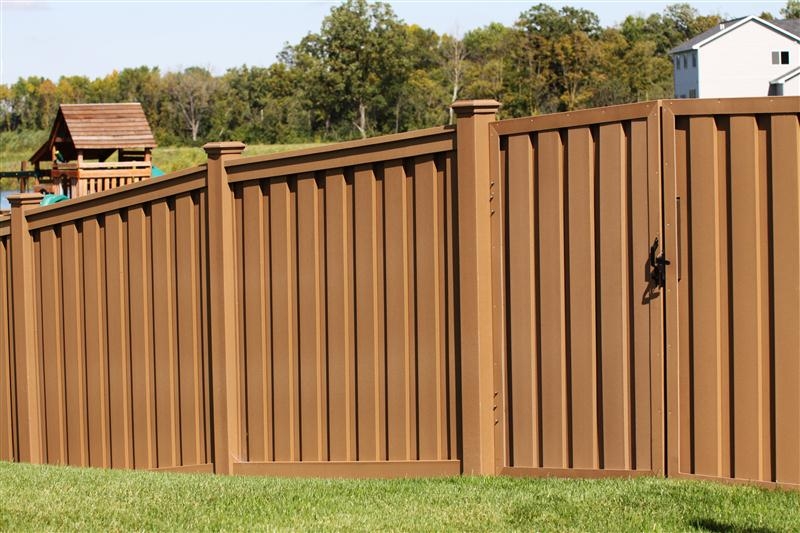In our last post we discussed the advantages of Trex Composite fencing. In this post we will compare PVC (or vinyl) fencing with Trex Composite fencing.
 There are two main types of manufactured material used to make fencing, vinyl (or PVC) and the newer composite fencing, led by manufacturer Trex.
There are two main types of manufactured material used to make fencing, vinyl (or PVC) and the newer composite fencing, led by manufacturer Trex.
PVC fencing came to market in the late 1970s and early 1980s. When vinyl fencing hit the market it was recognized as an alternative to wood fencing that required less maintenance and had a longer lifespan.
Composite fencing began appearing in the market in the late 1990s using the same material used in composite decks and was recognized for using recycled material and its durability and an appearance like wood.
 Both fences offer some advantage over wood. They are low- or no-maintenance, requiring no painting and only occasional cleaning. They are also resistant to rot and insect damage.
Both fences offer some advantage over wood. They are low- or no-maintenance, requiring no painting and only occasional cleaning. They are also resistant to rot and insect damage.
While both vinyl PVC and composite fencing are non-wood, they are made differently. Vinyl fencing is a plastic that is molded into panels. Composite fencing is a combination of recycled wood (typically chips or sawdust from mills) and recycled plastic that is made into boards similar to wood.
Vinyl fencing is formed into a single panel that allows for easy installation, typically without screws or nails. But that also means if there is damage — a chip, crack or break — the entire panel needs to be replaced.
Vinyl PVC fencing also typically is hollow in the center, except for posts which may have wood or metal reinforcement in the center. This makes it lightweight yet durable and less expensive than composite fencing.
Composite fencing, meanwhile, is a dense board which makes it durable and less susceptible to damage such as cracking or chipping.
While both fences are low maintenance, vinyl fencing can have mold form on it and will fade after years in the sun.
